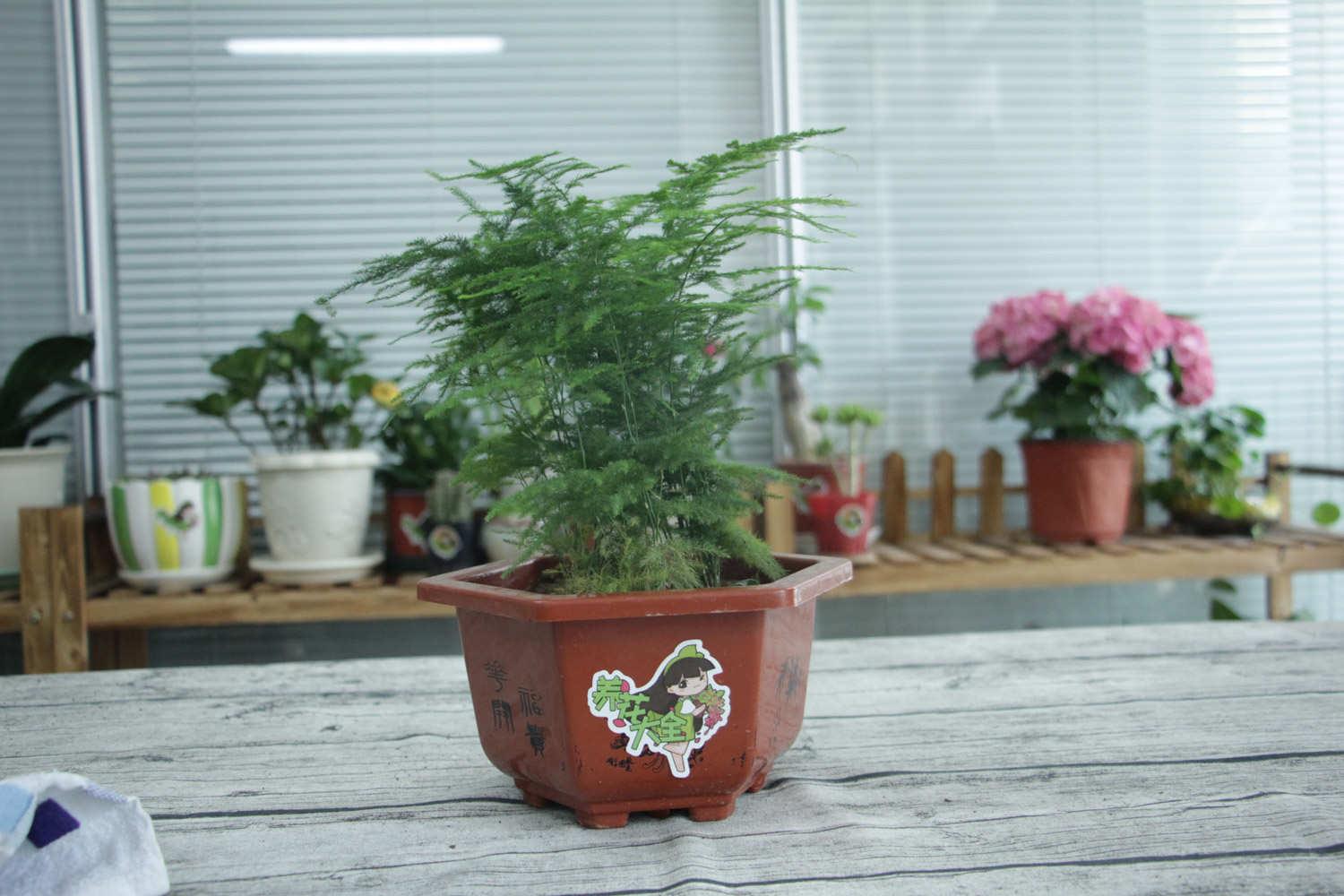How to grow asparagus?
Last Update :2024.11.16
Article Catalog
1. Watering: Water when you find the soil is dry. Just water it thoroughly every time. Do not allow water to accumulate. If the climate is dry, water needs to be sprayed frequently. 2. Temperature: It is best to provide an environment of 15-25°C. Temperature control measures should be taken to control the high and low temperatures in summer and winter. 3. Lighting: It tolerates shade and can be exposed to diffused light at ordinary times. 4. Fertilization: Apply diluted liquid fertilizer every 20 days in spring and autumn. It is best to stop fertilizing in summer and winter. 5. Soil: Use soft, breathable, fertile, slightly acidic soil for cultivation.

1. Watering
1. Watering
Asparagus likes to grow in a slightly humid environment and has poor drought tolerance. Therefore, if the soil is dry during breeding, watering is necessary to ensure that the soil is moist, especially During the peak growing season, lack of water is prone to yellowing, which will seriously affect growth. It is afraid of waterlogging, so the amount of water must be controlled when watering, and stagnant water is strictly prohibited. In addition, it has higher requirements for air humidity. If the climate is relatively dry, not only watering is required, but also frequent spraying of water is required to increase the humidity.

2. Temperature
Asparagus prefers a warm environment, and the temperature that is conducive to its growth is between 15 and 25°C. Its high temperature resistance and cold resistance are relatively poor. If you want it to grow vigorously, it should be used both in summer and winter. Appropriate temperature control measures must be taken. If the temperature in summer exceeds 34°C for a long time, ventilation must be strengthened or moved to an air-conditioned room to help cool down. After winter, you must move indoors, especially in northern areas, and the temperature must be controlled above 10°C to avoid freezing. The temperature in spring and autumn is suitable, which is its peak growth season, and it can be maintained outdoors.
3. Light
Asparagus has strong shade tolerance and is not tolerant to sunlight. However, if it is placed in a dark environment for a long time during the breeding period, the branches will easily become leggy and may even have yellow leaves. In order for it to grow more vigorously and have stronger branches, it is recommended to place it indoors in a brightly lit place to receive more scattered light. It must be blocked when the sun is strong in summer, otherwise it is easy to get sunburned.

4. Fertilization
Spring and autumn are the peak growth seasons for asparagus. During this period, the growth rate is fast and a lot of nutrients are consumed. In order to meet the demand for nutrients, appropriate top dressing is required. Just choose diluted liquid fertilizer as fertilizer and apply it every 20 days to ensure adequate nutrition. It is best to stop fertilizing during the high and low temperatures in summer and winter to avoid fertilizer damage.
5. Soil,
Asparagus prefers soft, breathable, humus-rich and slightly acidic soil. It can grow more vigorously in such a soil environment. When mixing the soil, peat soil, leaf humus soil, river sand and an appropriate amount of base fertilizer can be mixed. In addition, you need to change the soil once every one or two years to prevent soil compaction.
2. Temperature
3. Lighting
4. Fertilization
5. Soil,

- END -
How to grow a cactus thickly

If you want to grow a cactus, you need to provide a suitable growing environment a...
When will sugar cane be available and how much does it cost per pound?

It is an autumn and winter fruit. It usually starts to be on the market in October...
